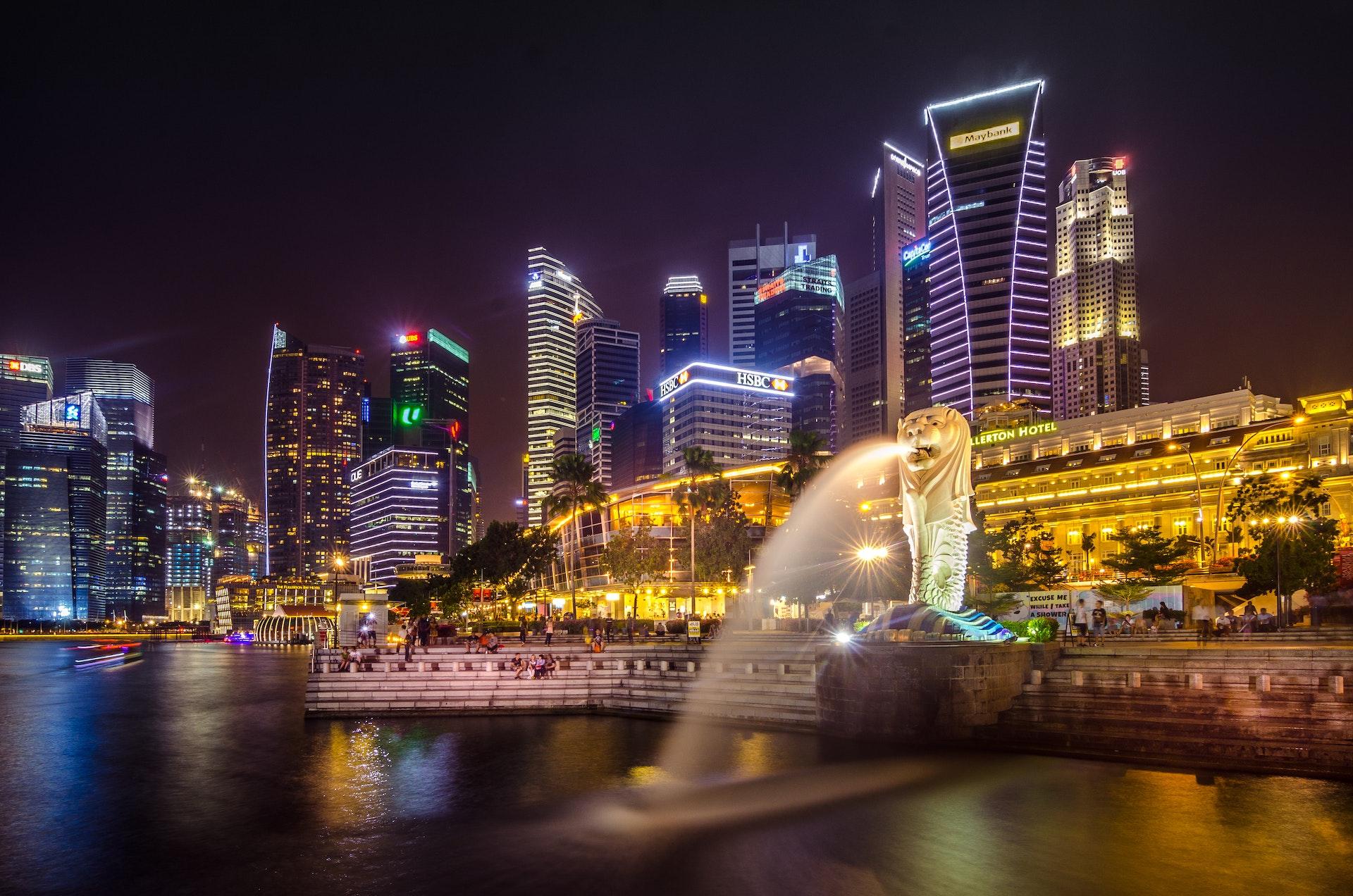Singapore, like most other big cities, has two faces. One is polished, a little uptight, boasting lit skyscrapers and expensive shops, the other, in the form of Chinatown and the adjacent Little India district, is quintessential Asia – fragrant, full of markets and street food stalls.
Rules in Singapore
Few people fly to Singapore "just because". Most people stop here as part of a stop-over for one or two days at most. But if you're travelling in, say, Malaysia or Thailand, pop in for a few days. You may be a bit scared by rumours of fines for spitting, smoking in public, chewing or showing affection on public transport. Homosexuals are not allowed to live here and forget about feeding the birds. Yes, Singapore is a somewhat "sterile" but incredibly beautiful, modern and dynamic city.
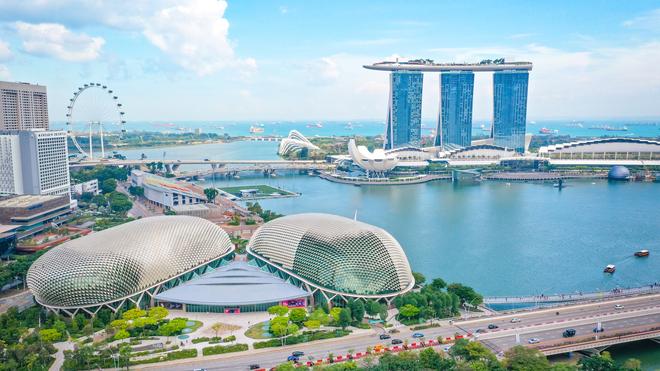
The local Singaporeans are classically Asian, friendly but reserved. The city's uniformity and austerity is reflected in their behaviour. No one runs a red light, no one overtakes anyone, no one pushes or gets in the way, which is a miracle in the crowded Singapore subway. Local youths walk around in uniforms, adults are conservatively dressed, and although Orchard Street is teeming with boutiques selling colourful clothes and luxury goods, they are not visible on the streets.
The most beautiful airport in the world
Changi Airport has earned this award several times. With three terminals (the third opened in 2008), the airport is the 20th largest in the world in terms of passenger numbers for 100 airlines. Upon arrival, you'll already be impressed by the space, which is one big gallery. Statues, sculptures, beautiful railings, lighting, ponds, gardens and of course hundreds of small bistros and upscale restaurants. Feel free to arrive at the airport a few hours early before flying home and explore it as another interesting attraction of the city. Transportation from the airport to the city is very easy. You can take a taxi of course, but local buses run fairly often, you just need to buy tickets from the ticket machine.
The Marina Bay Sands Hotel
If you're used to mid-range quality, there are plenty of three and four-star hotels in the city, with prices ranging from $150-$200 with breakfast. Popular shopping areas include Orchard Street and the area around Dhoby Ghaut station, where three metro lines meet. But if Singapore is famous for anything, it's the "alien" hotel called Marina Bay Sands. Until recently, it boasted the highest infinity pool in the world. Even those who don't stay at the hotel can pay to go to the poolside sky observation deck and take pictures of the city from above. Those lucky enough to stay at the hotel will have a truly extraordinary time.
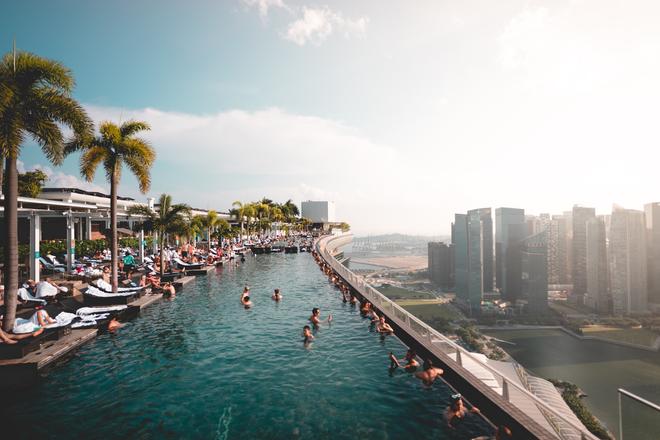
The hotel stands on three pillars, has two huge reception desks that handle hundreds of guests around the clock. The hotel has a capacity of 2,500 rooms. In the queue in front of the reception, the staff go around the waiting guests, offering them coffee, juices and doing a pre-check-in. Everything works perfectly and professionally. If you manage to get a room on a higher floor at the standard price, you won't even want to leave the room. The curtains open by themselves when you enter the room, the comfortable beds, the coffee machine... And the view, it's indescribable. One part of the hotel faces the city, the other the sea with dozens of boats.
Infinity pool
Of course, everyone immediately goes to the infinity pool. Due to the huge number of guests, it's not easy to find a free sun lounger, but in the evening it's no longer a problem and you'll be rewarded with a beautifully lit pool and the city below. In addition, there are small hot tubs and seating areas in the pool area, including the option of service from the on-site restaurant. From the hotel it's very easy to get to the huge shopping mall, where there's an International Food corner on the ground floor with dozens of small eateries. Here you can eat comfortably and at a reasonable price. If your finances allow, stay at the hotel for two nights. And don't forget the amazing water and light show on the waterfront in front of the Sands Expo & Convention Centre in the evening.
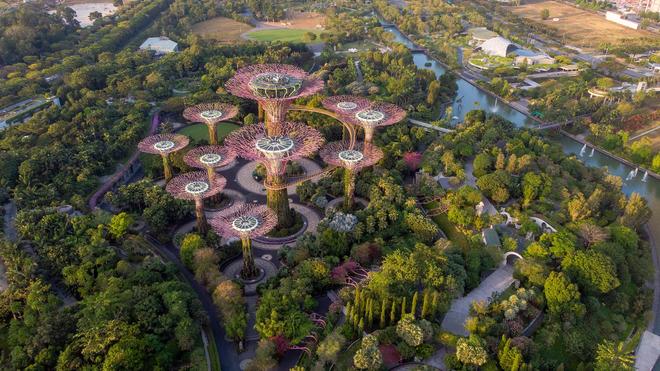
TIP: Walk through the Marina Bay Hotel into the large gardens, which feature 'supertrees', huge tree-shaped reinforced concrete structures up to 50m high, complete with solar panels that capture rainwater and provide shade. In the daytime, walking through the gardens, you can see lots of greenery, interesting exotic plants and orchids, sculptures and works of art, and hear birds singing. In the evening, the trees are beautifully lit up and look truly otherworldly.
Sentosa – island of fun
A classic day trip is a visit to Sentosa Island. Families with children head mainly to the famous Universal Studios, which take up a large part of the island. Others head for the small beaches. Right from the start, you'll enjoy a monorail ride, as this is the most common way to get to the island. From the Harbourfront Centre, the Sentosa Express runs every three minutes from 7am to 10pm. You can get off at one of the stops, such as the giant Merlion statue (the symbol of the city) or drive to the terminus and board one of the small buses that will take you around the island.
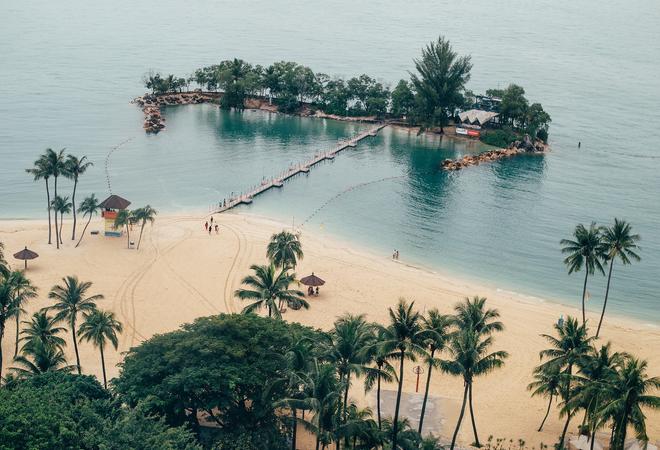
Once you get your bearings, you can choose where you want to go. Perhaps the southernmost point of mainland Asia. It's marked by a wooden sign on the islet of Palawan. Or walk the beaches on the southern part of the island. You can play golf at a local club and take the cable car back from Siloso Point Station for a change. Even if it's under a cloud, which it often is in Singapore, don't forget your swimsuit!
Colonial architecture and the modern centre
Singapore was a British colony until 1963 (despite being occupied by the Japanese in World War II). This is reflected in the surviving buildings in the city centre. A typical example of the magnificent architecture is the Raffles Hotel, a five-star luxury white house named after Sir Thomas Stanford Raffles, who founded the British port on the island. The hotel is popular with the local elite and businessmen who come here in the afternoons for a drink. The blend of old and modern is best enjoyed on an hour-long cruise on the Singapore River. The sightseeing cruise starts at the harbour in front of the Sands Expo & Convention Centre. The boat cruises down the river past some of the city's most beautiful spots, and from the water you'll see government buildings, the latest modern hotels, and the small two-storey houses that house restaurants and shops throughout Clarke Quay and Robertson Quay. One tip: late afternoon is better for the sun; sit in the back of the boat on the starboard side.
The zoo or the cemetery?
Walking around the city is an experience in itself, but you can also go "out of town". Singapore has a very sophisticated public transport system (especially the metro with the acronym SMRT, buses and trains), which allows you to explore the city's surroundings and a few attractions. One of them is the Singapore Zoo. The garden has beautiful trees, shrubs, flowers, and thanks to its technical maturity, all visitors can take part in an interactive tour.
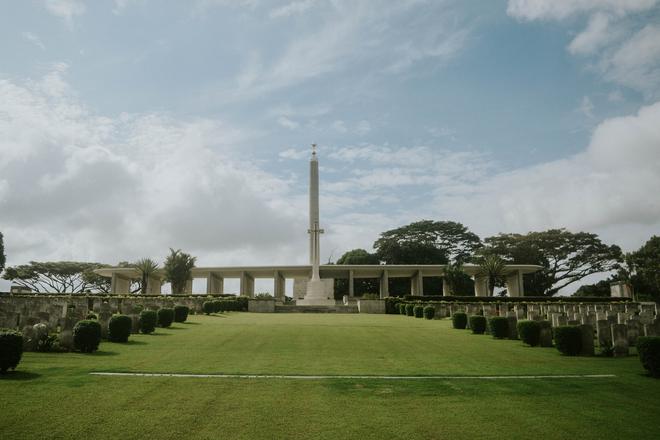
You can combine a trip to the zoo with a place that is sad but really fascinating. That place is the Kranji War Cemetery, which is known mainly to military history buffs. It is the resting place of Allied soldiers who died here during the Battle of Singapore and the subsequent Japanese occupation from 1942 to 1945. Over 5,000 are buried in the cemetery and the Singapore Memorial bears the names of more than 24,000 Commonwealth land and air force casualties whose graves are unknown.
Chinatown and the Indian Quarter attract foodies
Like all big cities, Singapore has a mix of nations and nationalities. Chinatown and the Indian Quarter take up a large number of streets in the heart of the city and are popular places for people hungry for good food. While the small houses under the garlands offer Chinese specialties "to go" or you can pick up dragon fruit or a banana to stave off hunger at the market stalls, the Indian Quarter has orderly little restaurants scattered along each street. Signs with pictures of food beckon everywhere, and it's a testament to the size of the Indian community that you can't find a seat anywhere at lunch or dinner time. Throughout the neighbourhood, at all times of the day, groups of five to ten men stand on the street. They're doing nothing but chatting and looking suspiciously at the female tourists. The women are not visible at all.
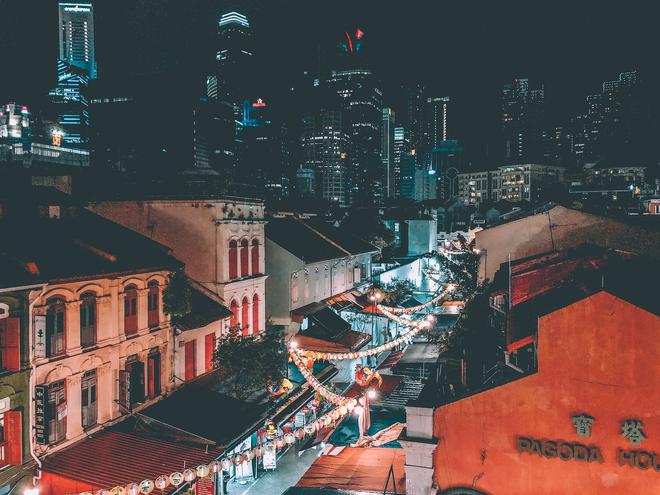
If you want to save a few dollars on food, avoid the street-level restaurants. Similar offerings are available in "basement" eateries on major streets, in shopping malls, and in passageways, and for at least half the price.
